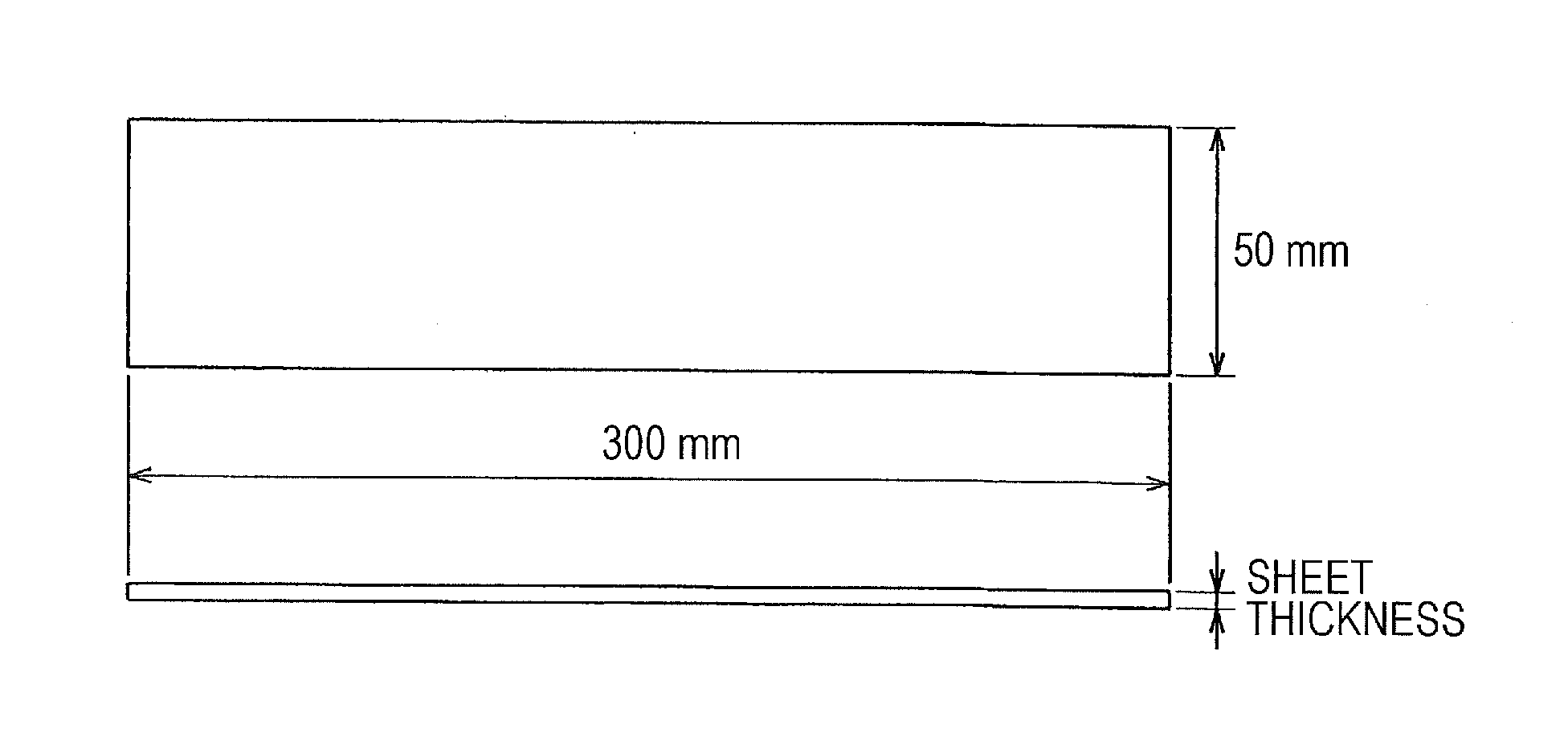Press-forming mold designing method and press-forming mold
a press-forming mold and design method technology, applied in forging/hammering/pressing machines, shaping tools, instruments, etc., can solve the problems of lower press formability of workpieces with higher strength, and achieve stable press forming, improve press forming failure rate, and prevent bendability-dominated fractures
- Summary
- Abstract
- Description
- Claims
- Application Information
AI Technical Summary
Benefits of technology
Problems solved by technology
Method used
Image
Examples
examples
[0044]First, two specimens A and B shown in Table 1 which had substantially equal ductility (total elongation) and different levels of bendability were processed into several kinds of test pieces having a shape illustrated in FIG. 2 and a smallest width of 10 to 100 mm. The surface of the test pieces was subjected to electrolytic etching to form a dot pattern with dot intervals of 1.0 mm. Next, the test pieces were bulge formed with a spherical punch having a minimum curvature radius of the tip of 25 mm. The bulging with the spherical punch was continued until a fracture penetrated the steel sheet. With respect to the bulge formed test pieces, changes in dot intervals that had occurred in the vicinity of the punch tip were measured. The maximum principal strains and the minimum principal strains were thus determined, and a forming limit diagram was prepared.
TABLE 1SheetYield TensileTotalCriticalthickness stressstrength elongation bendingSpec-t YS TSElradius R*Bendabilityimen(mm)(MPa...
PUM
| Property | Measurement | Unit |
|---|---|---|
| Radius | aaaaa | aaaaa |
| Strain point | aaaaa | aaaaa |
Abstract
Description
Claims
Application Information
 Login to View More
Login to View More - R&D
- Intellectual Property
- Life Sciences
- Materials
- Tech Scout
- Unparalleled Data Quality
- Higher Quality Content
- 60% Fewer Hallucinations
Browse by: Latest US Patents, China's latest patents, Technical Efficacy Thesaurus, Application Domain, Technology Topic, Popular Technical Reports.
© 2025 PatSnap. All rights reserved.Legal|Privacy policy|Modern Slavery Act Transparency Statement|Sitemap|About US| Contact US: help@patsnap.com



